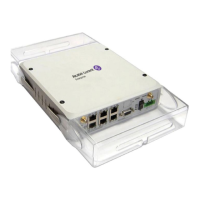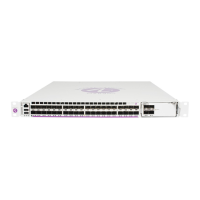Basic VRRP Configurations
232 7705 SAR OS Router Configuration Guide
Deleting a VRRP Policy
Policies are only applied to non-owner VRRP instances. A VRRP policy cannot be deleted if
it is applied to an IES or VPRN service. Each instance in which the policy is applied must be
deleted. The following example displays a policy deletion.
config>vrrp
config>vrrp# no policy 1
The Applied column in the following example displays whether or not the VRRP policies are
applied to an entity.
#show>vrrp# policy
======================================================
VRRP Policies
======================================================
Policy Current Current Current Delta Applied Svc
Id Priority & Effect Explicit Delta Sum Limit Context
-------------------------------------------------------------------------------
1 70 Delta None 70 1 Yes None
100 None None None 1 No None
255 None None None 1 No None
VRRP IES or VPRN Service Parameters
VRRP parameters are configured within an IES service with two contexts, owner or
non-owner. The status is specified when the VRRP configuration is created. When configured
as owner, the virtual router instance has the same real IP addresses as the virtual backup IP
addresses. All other virtual router instances participating in this message domain must have
the same VRID configured and cannot be configured as owner.
For IPv4, up to two VRIDs can be configured on an IES service interface. Each virtual router
instance can manage up to eight backup IP addresses.
VRRP parameters configured within an IES service must include the following:
•vrid
• virtual backup IP address(es)
Note: VRRP service parameter configuration is the same for VPRN.

